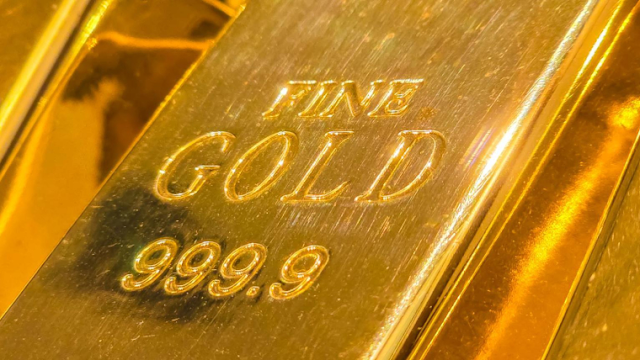Valoriser l'or en termes réels
------------------------------------------------------------------------------------------------------------------------------
ONE of the difficulties in writing about gold is that many commentators and readers start with very strong opinions on the subject. There is an almost religious element to its appeal; back in my FT days, one correspondent said that, by doubting the bullish case, I had 'gone over to the dark side'.Gold is viewed as a hedge against rapid inflation and against the collapse of the banking system, an event that would be expected to have deflationary expectations. That gives gold bugs an each way bet and also makes it hard to interpret the signal being sent by a rise (or fall) in the gold price. It does not help that gold has no cashflows. This makes it very difficult to put a value on the metal in the way that one can suggest a stock with a price-earnings ratio of 50 looks overpriced. It also allows for a wide range of forecasts; Standard Chartered says the superbull case is for $4869 an ounce by 2020; Tim Lee of pi Economics, a monetarist, is going for $700 in 12 months' time.
The former editor of The Economist, Bill Emmott, has thrown his hat in with the sceptics. Writing in the Times on Monday (now behind Mr Murdoch's paywall so no link) under the title 'The end of the golden age will soon be with us', he dismissed many of the bullish arguments. On inflation, he said that
Western economies do not have the rigid labour markets and strong trade unions that create a real wage-price spiral.
He added that
The dollar has, admittedly, been falling recently but that means that other currencies - the euro, Swiss francs, sterling, the yen - have been rising. So a second argument of the gold bugs, that the price reflects a general disillusionment with paper currencies, doesn't ring true either.
This doesn't seem a very convincing point. To the extent that the dollar falls, other convertible paper currencies have to rise. By and large, they have all been falling relative to gold; gold was Sfr 1126 an ounce at the start of last year, compared with Sfr 1326 now, a rise in Swiss franc terms of almost 18%. Were we back in the days of the gold standard, when each currency was worth a certain amount of gold, the Swiss franc would have been forced off the standard long ago.
Mr Emmott looks to China, India and the middle East for his explanation. Inflationary concerns are more marked in the first two than in the developed world, while political unrest might be pushing many middle eastern investors into the perceived safety of bullion.
Our analysis is complicated by the fact that gold, a metal in limited supply, is priced in terms of dollars, a paper currency which can be created at will. So it is probably better to view it against real things that the consumer might have to buy. The two most basic needs are food and energy. So the chart shows gold relative to wheat and relative to oil over the last 25 years.
As you can see, the chart is highly volatile, particularly in the case of oil. Energy was very cheap in the late 1990s; one reason perhaps why the boom of that decade was so vigorous and long-lasting. The nadir for the gold-oil ratio came as the financial crisis gripped, and authorities responded by slashing interest rates and then invoking QE. Gold looked very overvalued in terms of wheat at the start of 2010 and still looks very pricey relative to the last quarter of a century.
What it doesn't look like is a bubble like the chart of NASDAQ in 1999 and early 2000. There was a vertical take-off in the gold-oil and gold-whaet ratios ratio as the financial crisis occurred, largely because other commodity prices plunged while gold was fairly stable. But oil and wheat have since rebounded so one could see gold's stability in 2008-2009 as a sign of investor confidence that the authorities would avert a deflationary spiral.
Valuing gold in real terms

